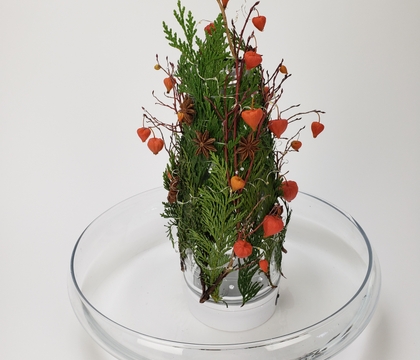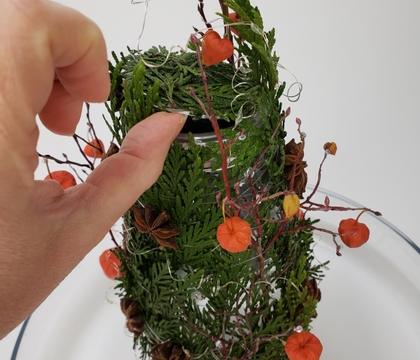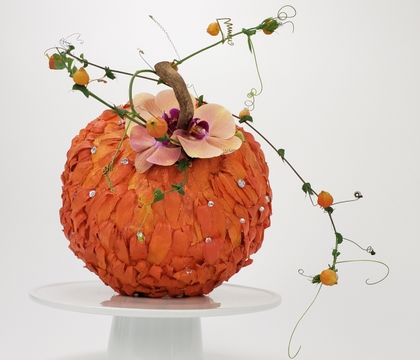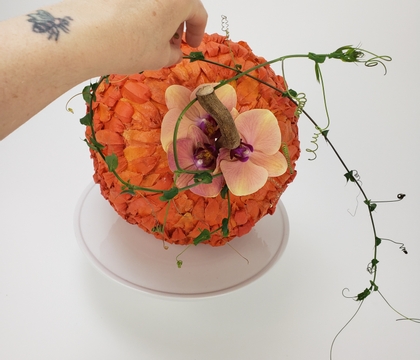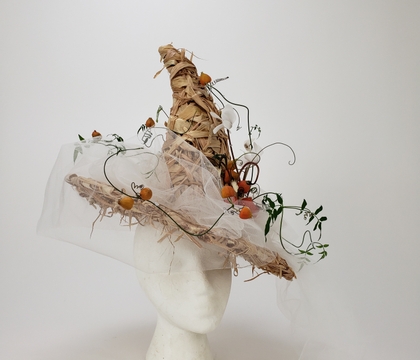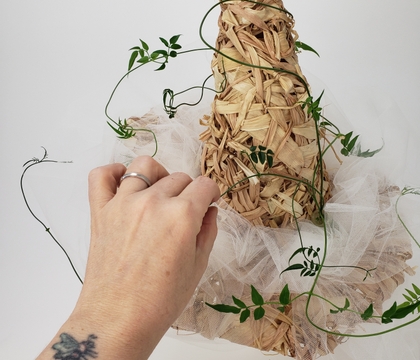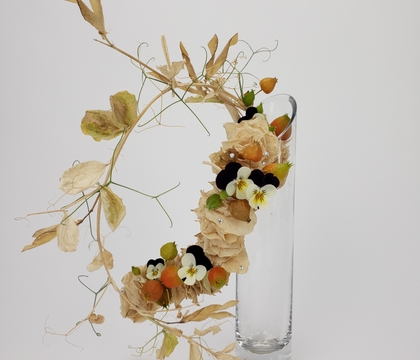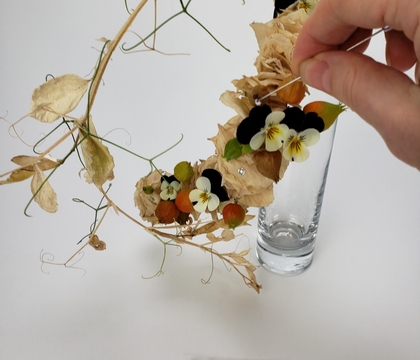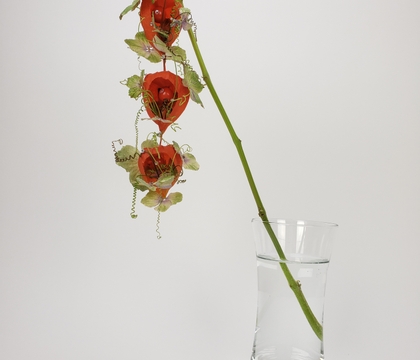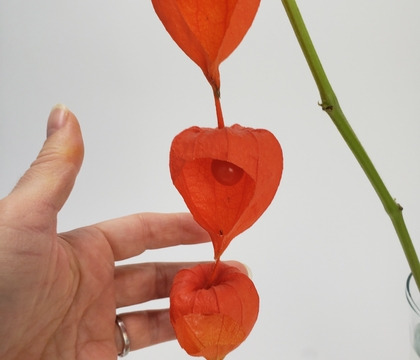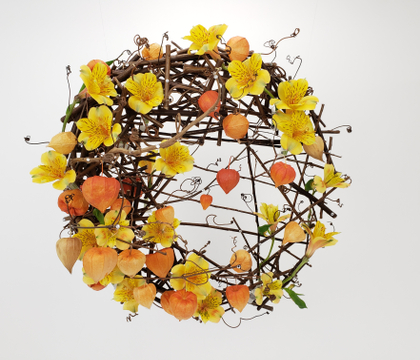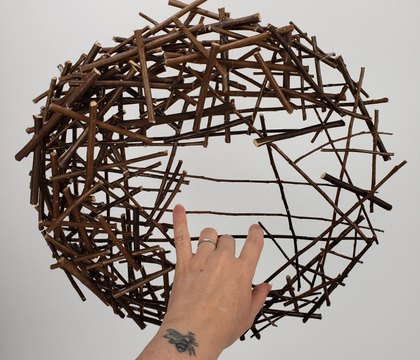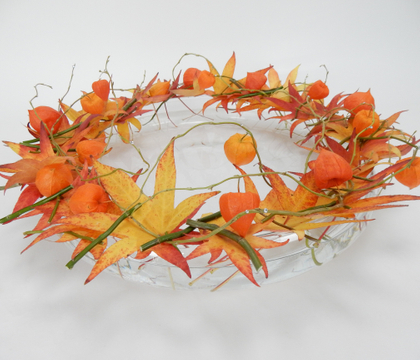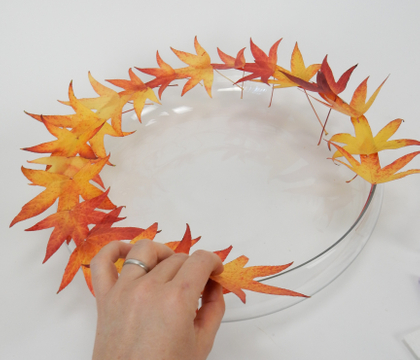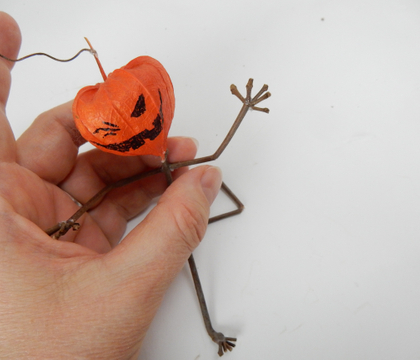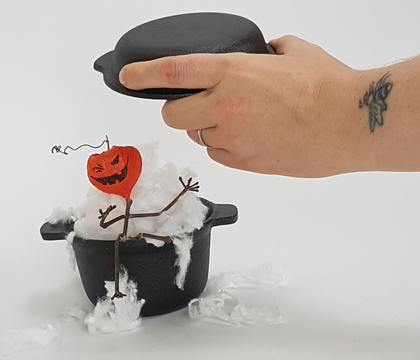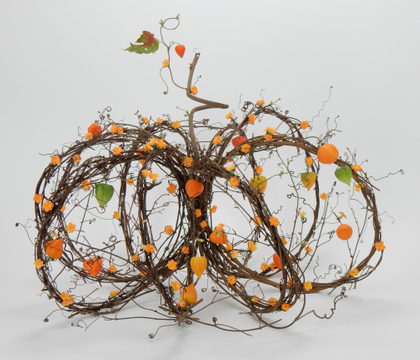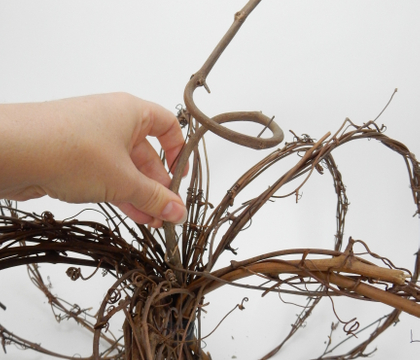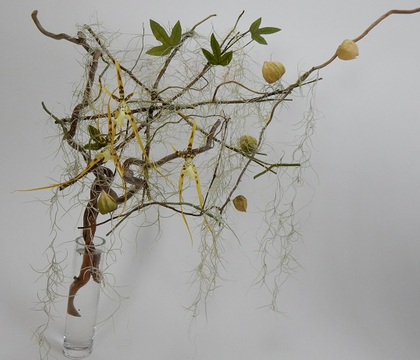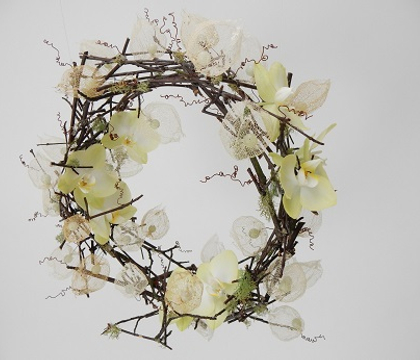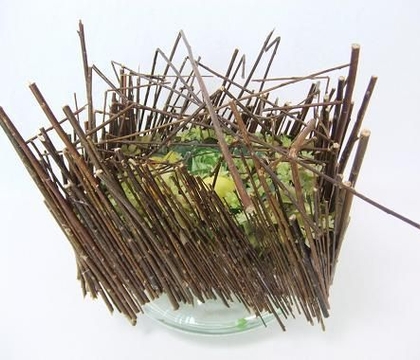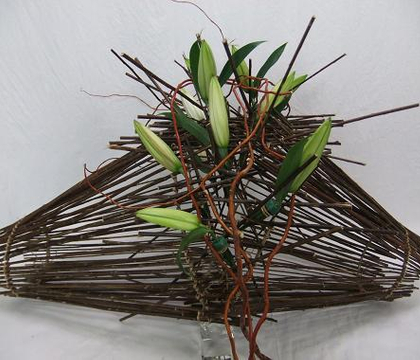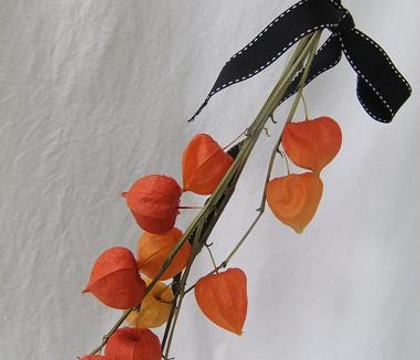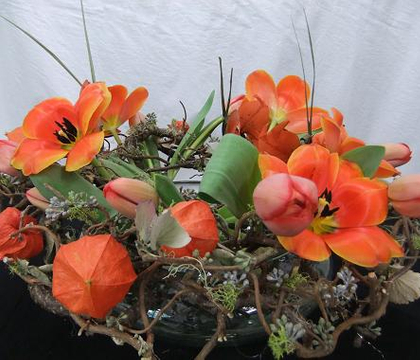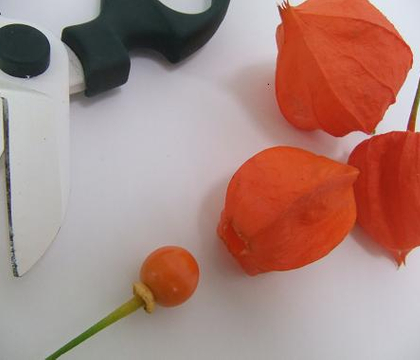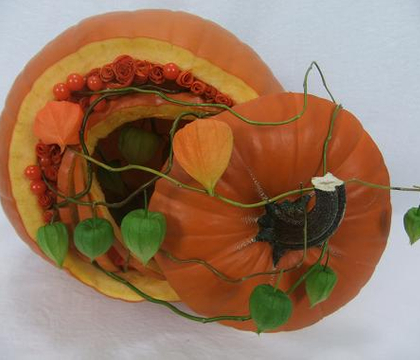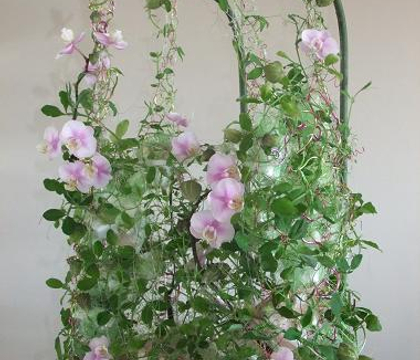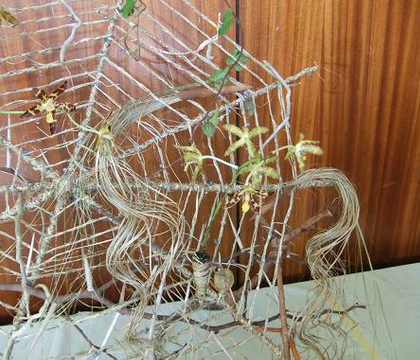Christine de Beer - effortless floral craftsman
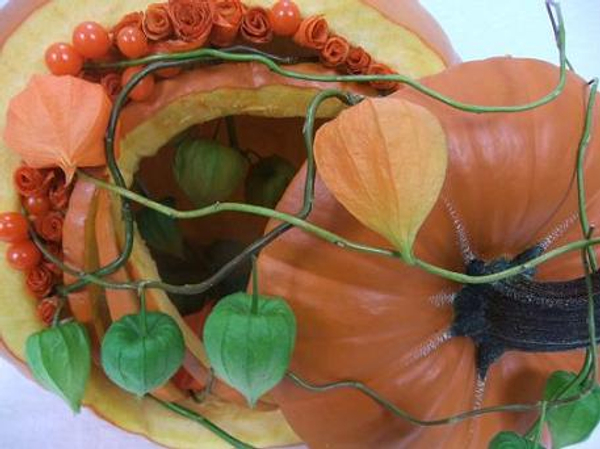
Physalis
The most notable feature is the single papery pod (sepal) covering each berry. Lightly hairy stalks, light green oval leaves. Makes tiny white or yellow flowers similar to tomato plants.
Spiral flowers from Chinese lantern sepals for my Thanksgiving Harvest design.
Common name
Origin
Varieties
The varieties found in Japan (Physalis alkekengi (Franhetti)) have larger pods than the green and yellow varieties found in South Africa
Colors
Vase life
Scent
Uses
The cape gooseberry fruit is edible and look fantastic on desserts. The husks can be dried into a skeleton so that only the veins remain in tack. The pods look great in whimsical designs.
Conditioning
Give the stem a fresh cut and set into water to hydrate. Hang the mature stems upside down to dry.
Sign up for my weekly newsletter
Every week I add a new design with related tutorials. Be sure to subscribe to receive an email notification with design inspiration.
